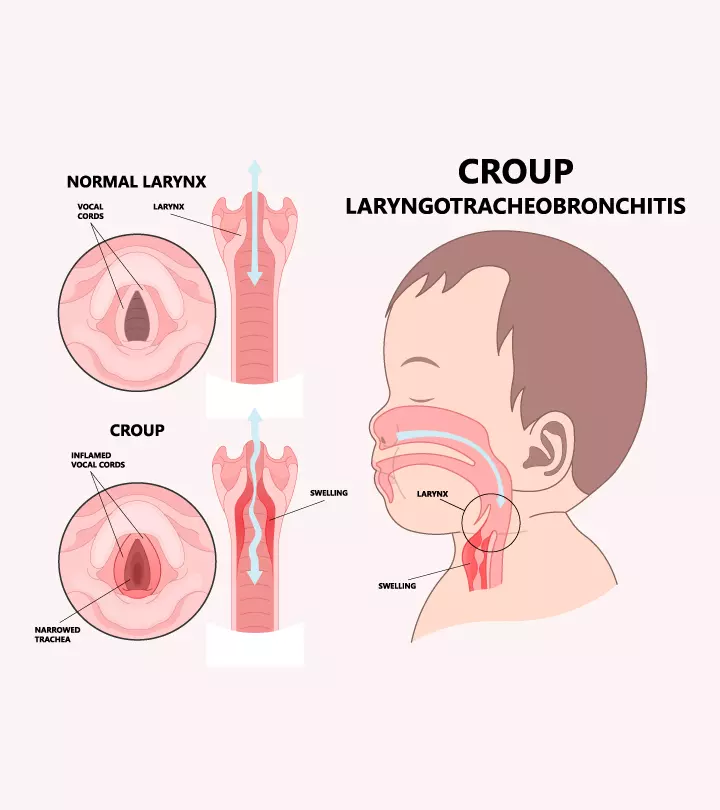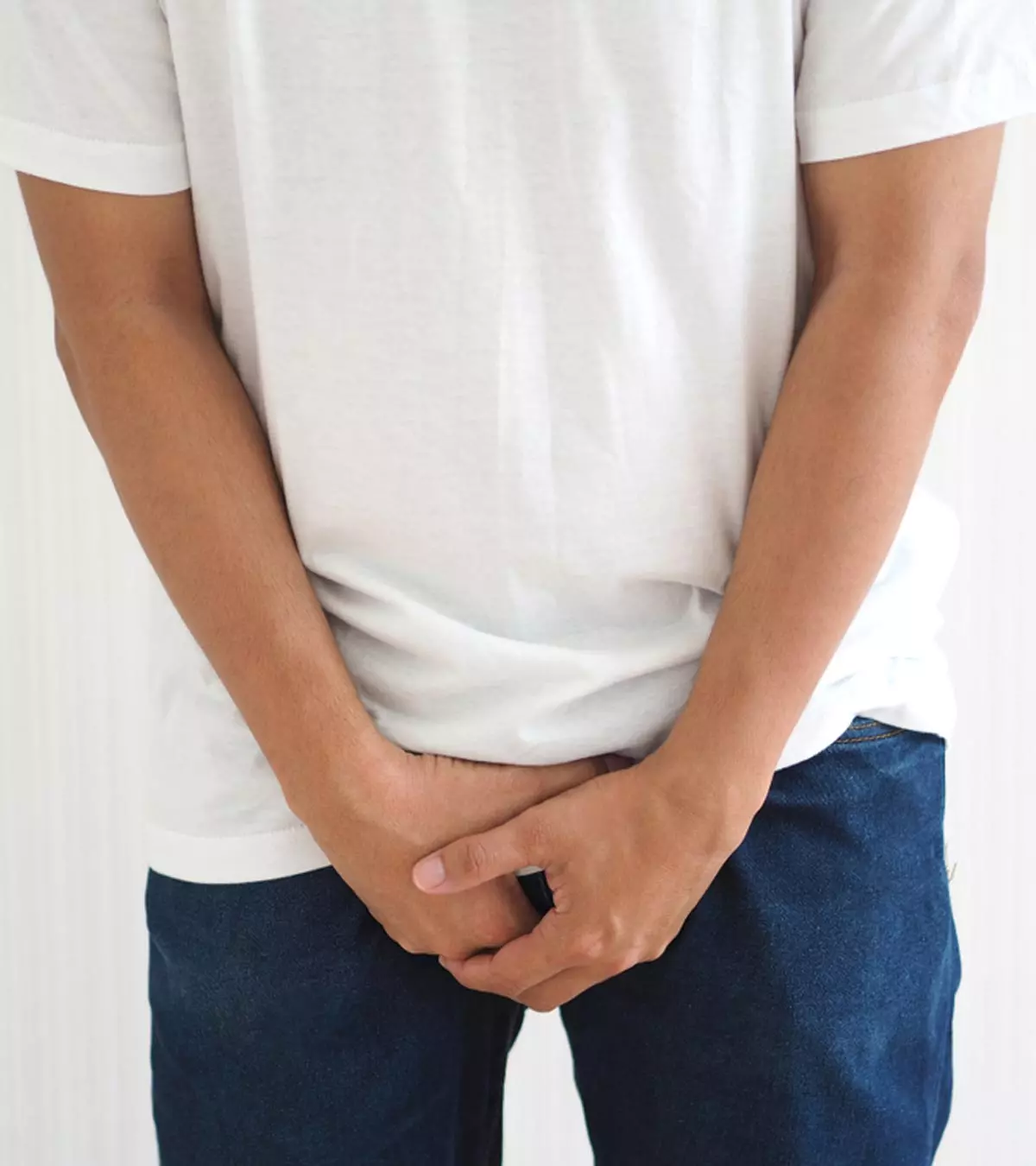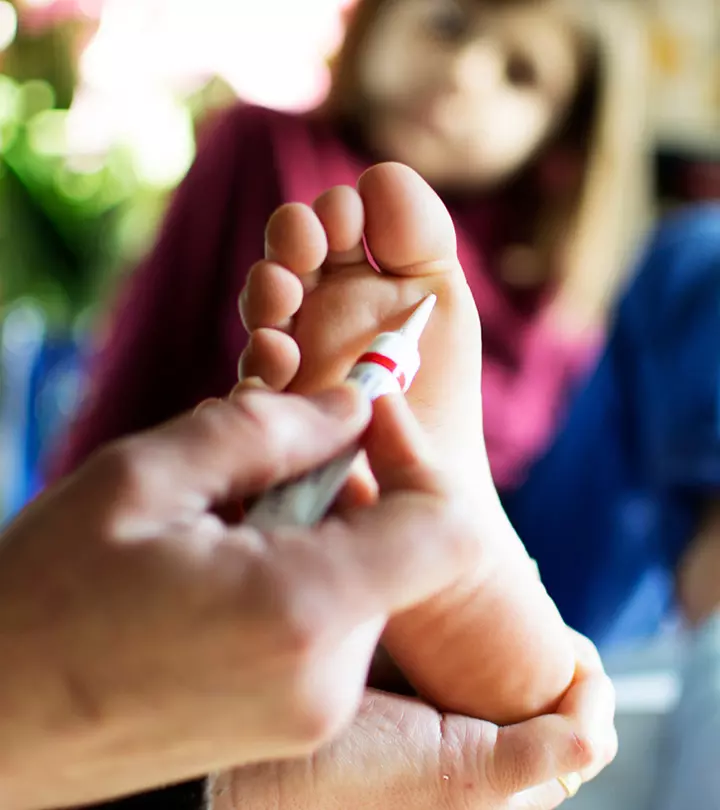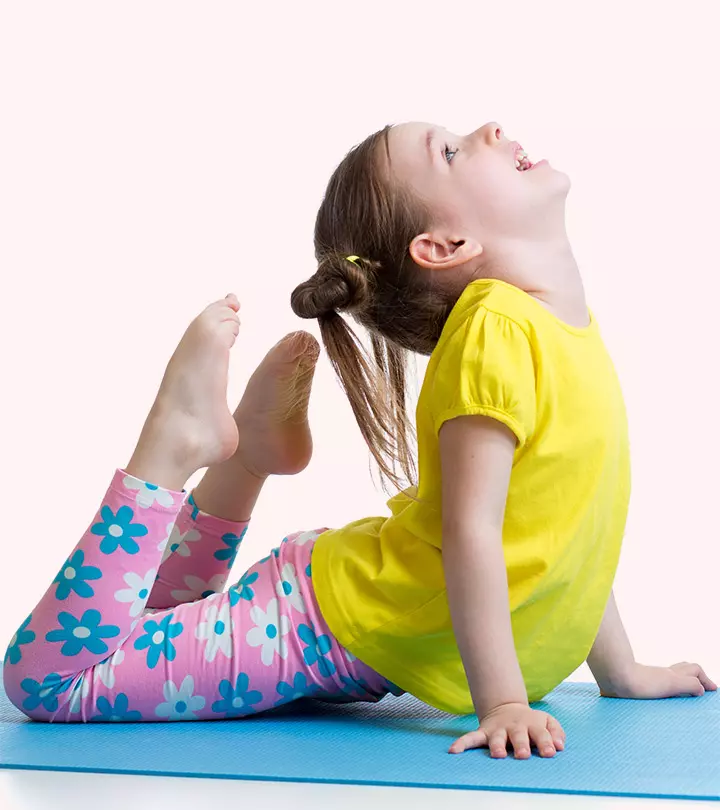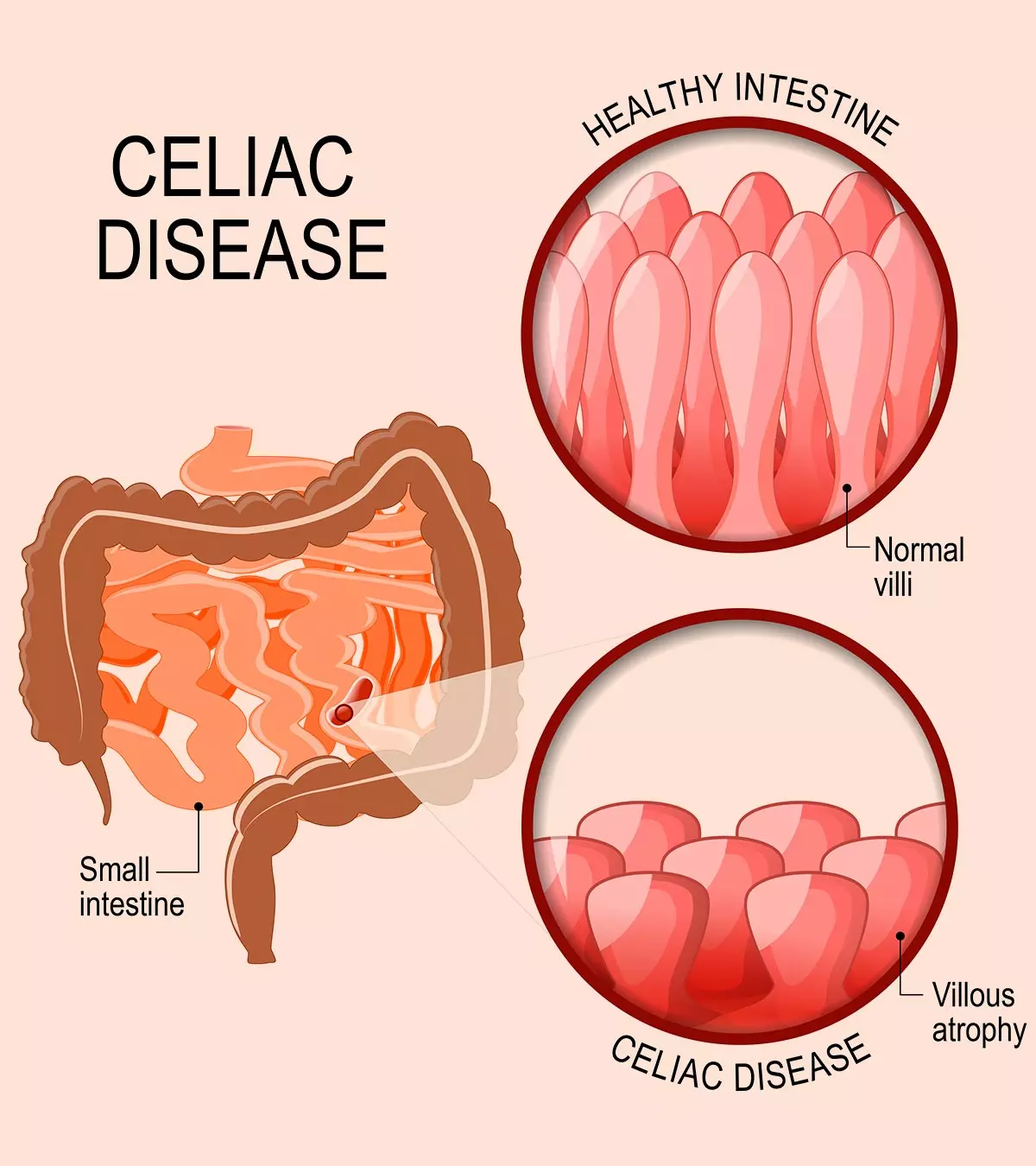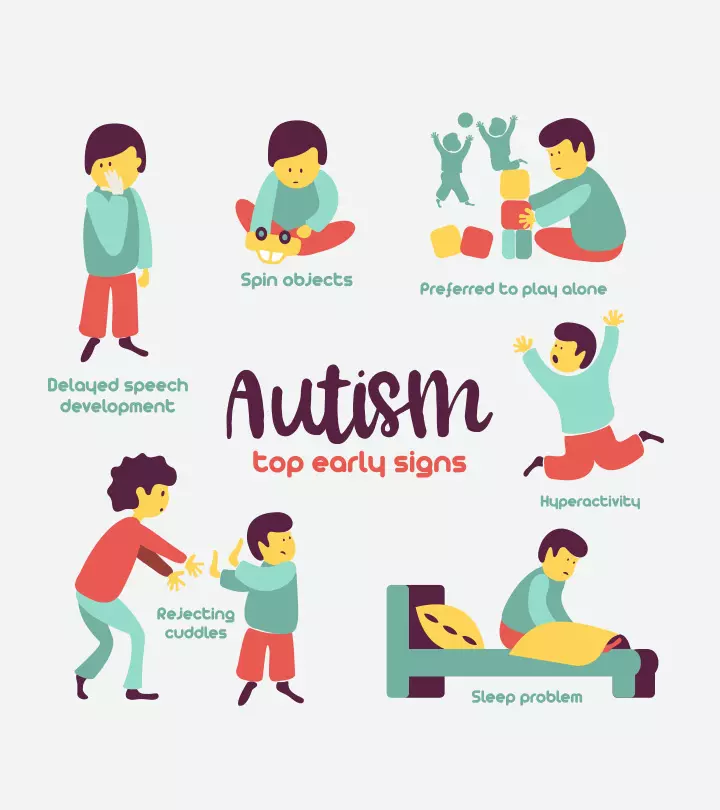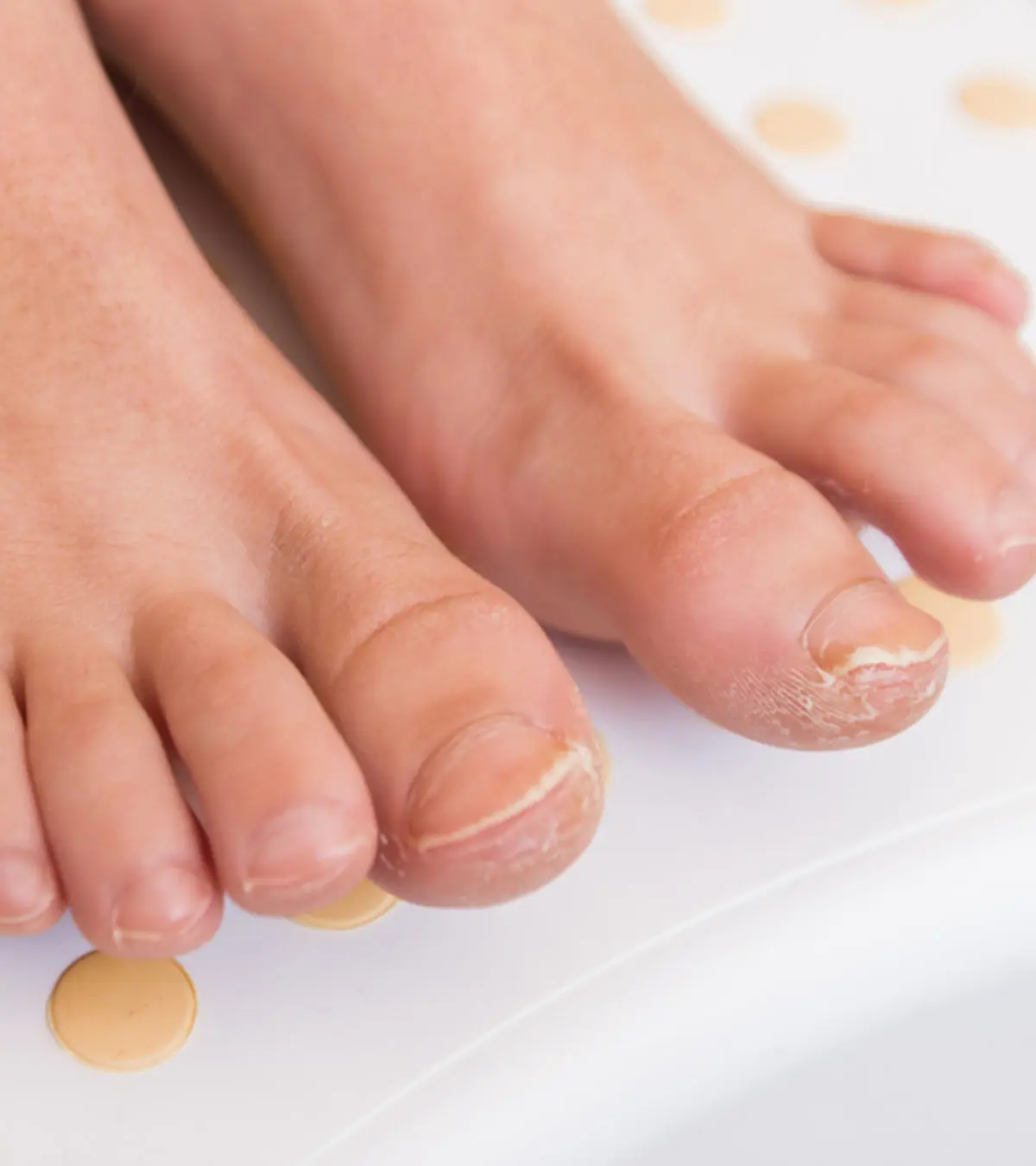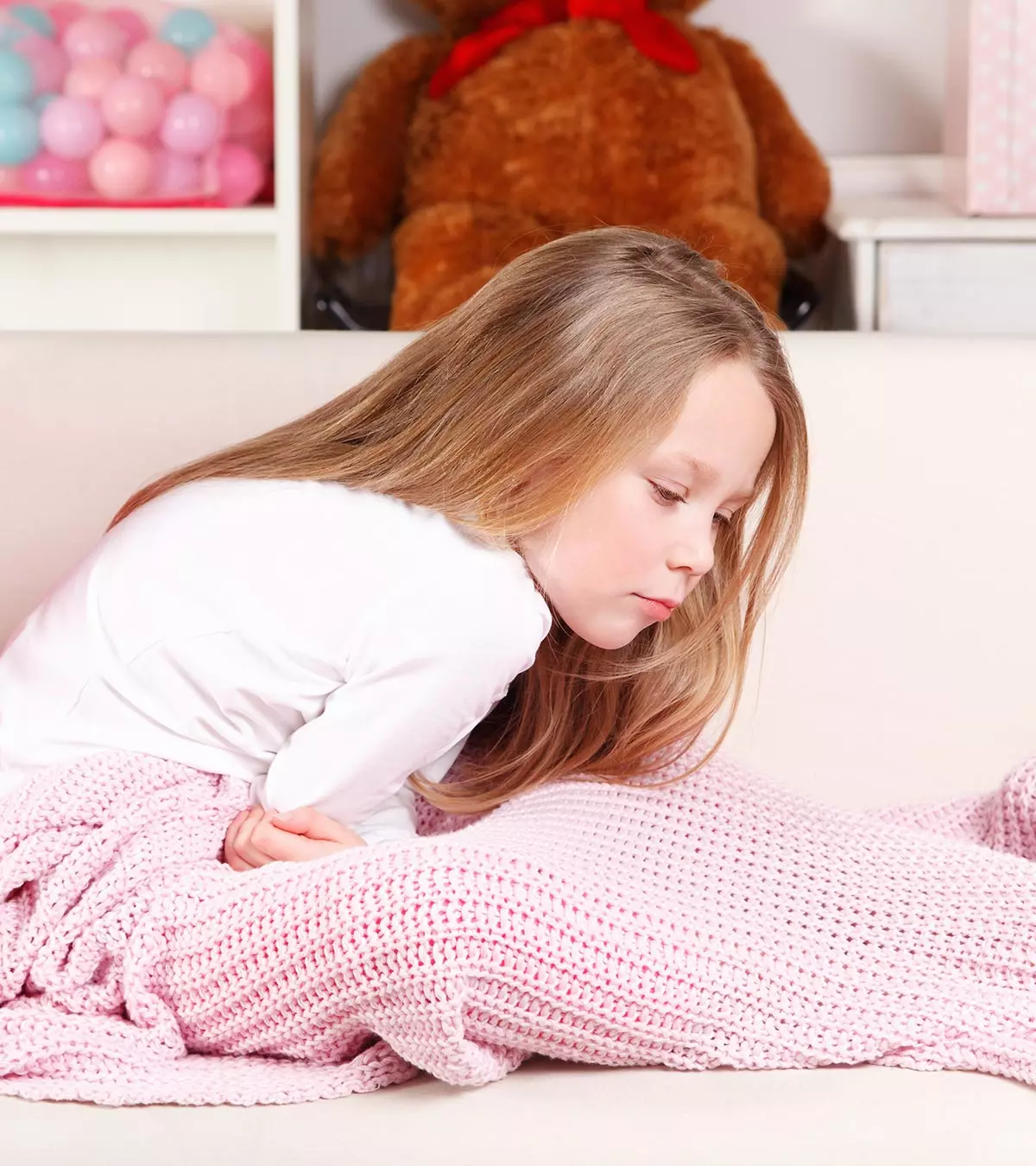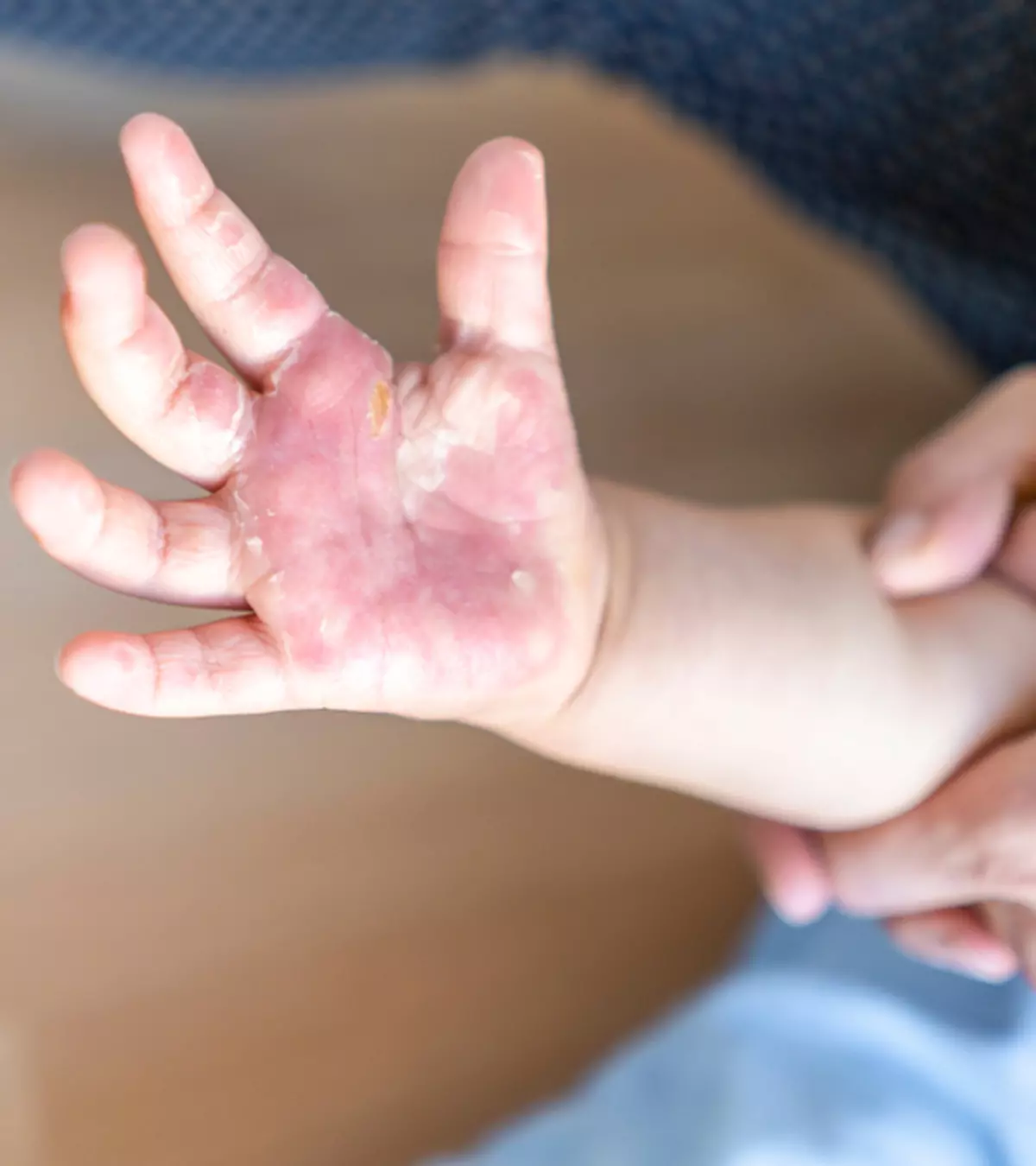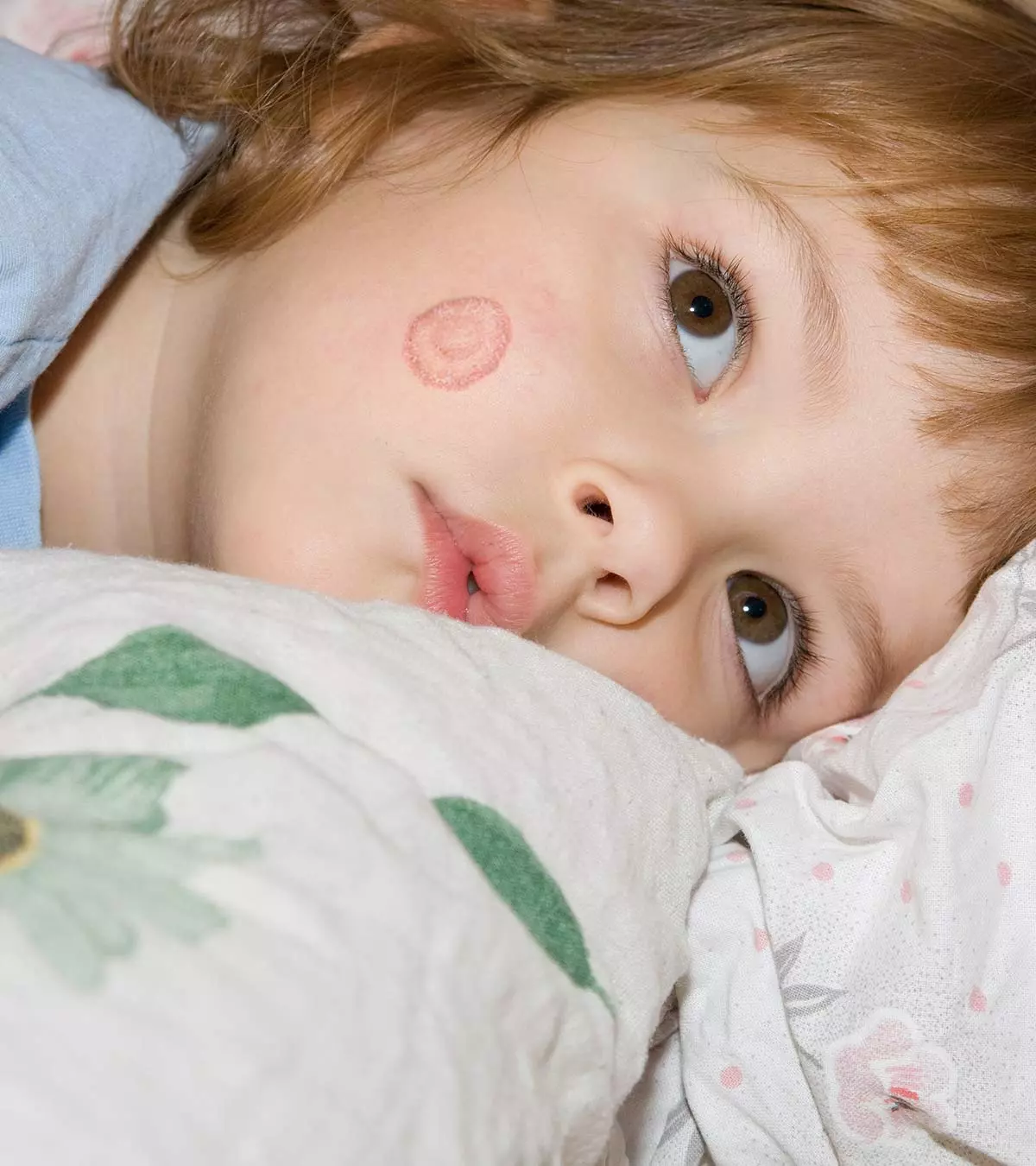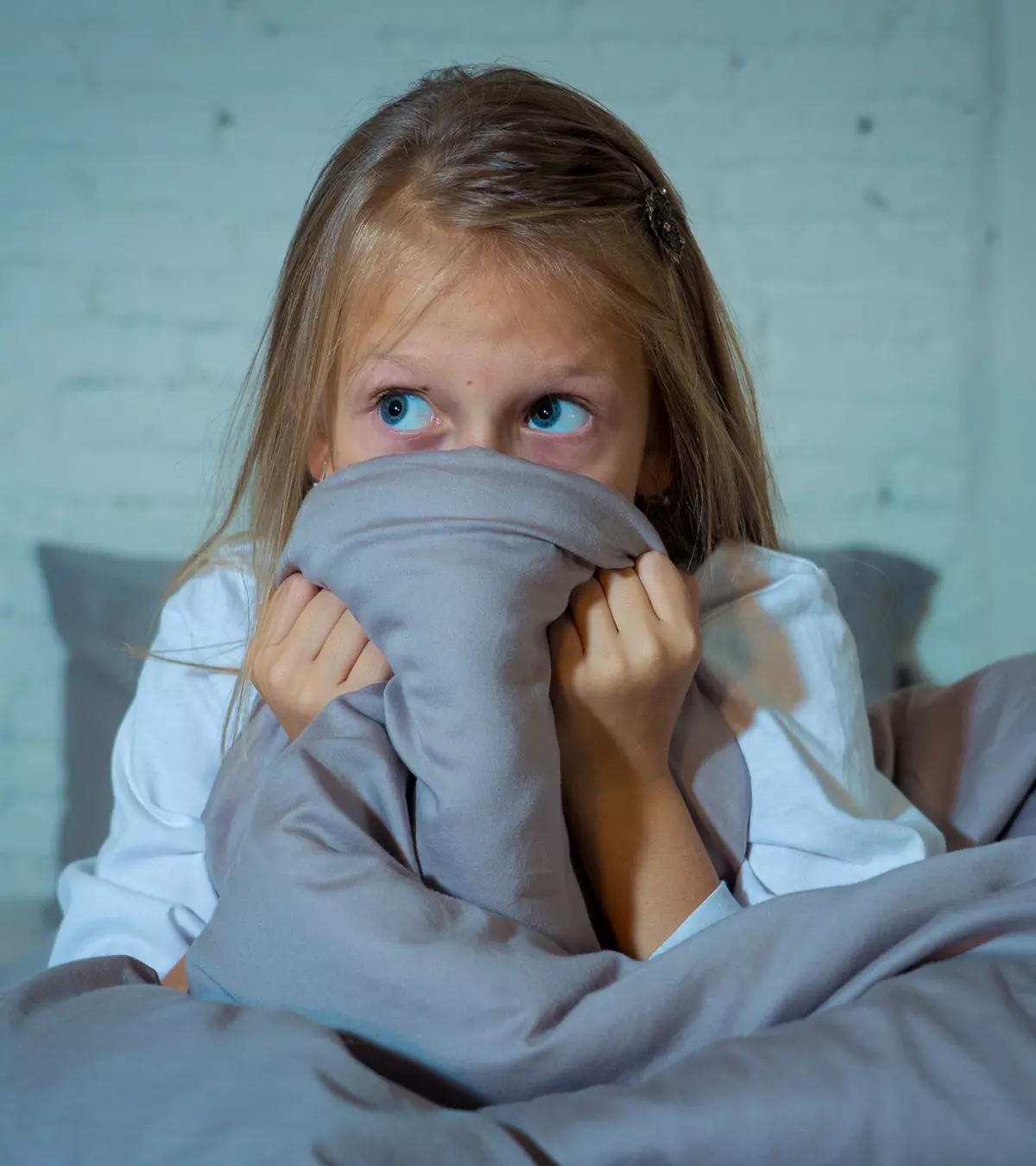
Image: ShutterStock

Panic attacks in children are common, but it is a treatable condition (1). Physical symptoms such as increased heartbeat and breathing difficulty with sudden episodes of fear can be seen during panic attacks. However, there won’t be any real factors causing this apprehension in most cases, and it may start without any alarming signs. Panic attacks may last for a few minutes to hours in children, and it is recommended to seek medical care to initiate psychotherapies from early stages.
It’s important for parents and caregivers to understand panic attacks. Recognizing the signs and symptoms early helps you provide timely support and intervention. Read on to know the symptoms, causes, risk factors, and treatment of panic attacks in children.
Key Pointers
- Various factors such as genetic conditions, stressful lifestyle, and disturbing incidents may cause panic attacks in children.
- The panic attacks may present with physical and emotional symptoms, including fear, sweating, breathlessness, nausea, headache, chest pain, and stomach ache.
- Physical examinations and other tests may be advised by a doctor to assess any physical illness, while psychiatrists can help diagnose mental health disorders.
- Treatment options for panic attacks in children include some relaxation techniques, behavioral therapy, and medications.
- Prognosis for panic disorders is good in children with the support of parents and caregivers and appropriate treatment.
Panic Attacks in Children
A panic attack is an episode characterized by intense fear and anxiety, encompassing both physical symptoms and alarming thoughts. The diagnosis of panic disorder is established when a child experiences recurring panic attacks and maintains anxiety about potential future episodes for over a month. Children and teens with panic disorder may adopt avoidance behaviors, steering clear of specific places or activities due to the apprehension of a potential panic attack. Panic attacks may also affect the child’s daily living, affecting how the child interacts with their family members, especially when they feel misunderstood or belittled. They may also have somatic complaints and fluctuations in mood that interfere with their academic performance and ability to play. Adolescents with repetitive and debilitating panic attacks may show signs of negative coping, such as substance use, self-harm, or suicidal ideations, indicating the need for medical help (12) (20). While individual panic attacks are widespread, repetitive occurrences are uncommon, manifesting in only one to three percent of children and teens. Notably, panic disorder typically emerges during the teenage years, sparing children from its impact before adolescence (2).
Symptoms Of Panic Attack In Children
Clinical psychologist Dr. Nivedita Nayak notes,“Panic attacks in children are real, distressing, and often overlooked. Unlike adults, children may not be able to express their feelings, so their distress manifests through physical symptoms or sudden emotional outbursts.” A panic attack usually starts suddenly without any alarming signs or symptoms. These episodes can happen during the night or daytime. Some children may have frequent attacks, while others may have occasional episodes.
Signs and symptoms associated with a panic attack may include (3):
- Sweating
- Shortness of breath
- Chills or trembling
- Rapid heartbeat
- Hot flashes
- Chest pain
- Abdominal pain
- Headache
- Nausea
- Fainting
- Screaming
- Weeping
- Hyperventilation (breathing fast) or heavy breathing
Symptoms may last for a few minutes, and children may feel tired or often sleep after the symptoms disappear. Children may behave detached from reality and often say they feel like they are going to die or going crazy. The child may start avoiding factors and situations that cause panic.
Beside the dramatic clinical presentation, panic attacks do not usually require a medical emergency visit. However, if left untreated, children with panic disorders may have reclusive behavior and may not want to go to school or meet people.
If your child has panic attacks often, then make an appointment with a pediatrician or family physician. It is important to visit the doctor for a proper diagnosis (1).
Speaking about her son’s panic attacks, Marisabel Garcia, a mother of five children, says, “To David (my son), a migraine would trigger his nauseousness, which would trigger a panic attack. By this point, David was panic-stricken about vomiting. Stomach flu season was also a difficult time for him (i).”
Causes Of Panic Attacks In Children
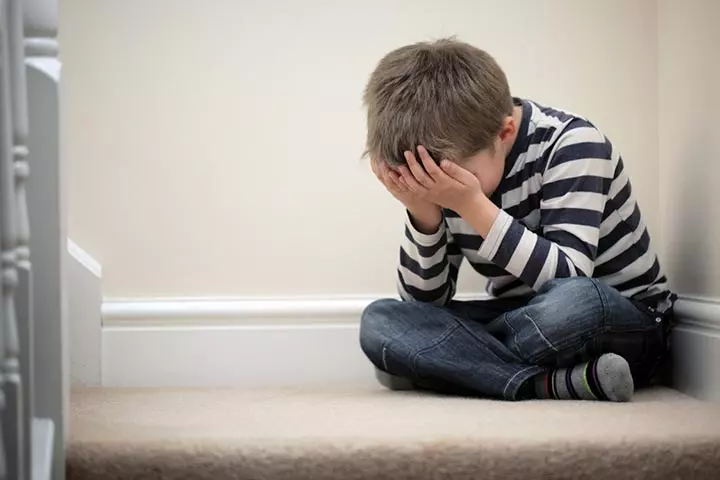
The exact cause of panic attacks or panic disorders is not known. The following factors may have a role in the development of panic disorders (4).
- Genetics
- Stress
- Changes in brain functions
The nature or temperament of a child may also play an important role in the development of panic and anxiety disorders. Children who are more sensitive to stress and negative emotions may have an increased risk for panic disorders. A few children may have panic reactions triggered by certain emotional stress situations such as school homework, fear of punishment from parents or teachers, etc.
 Quick fact
Quick factDiagnosis Of Panic Attack In Children
You have to explain in detail the panic episodes of the child. Doctors may ask a few questions to identify any triggers or phobia related to panic attacks. They may also perform a physical examination and order some tests to exclude medical conditions that may resemble a panic attack (5).
If there is no evidence of other physical illnesses, then your doctor may refer your child to a psychiatrist. A detailed analysis by a psychiatrist could help diagnose the mental health disorders that led to the panic attacks. Mental health disorders, such as social anxiety disorder or OCD in children, are examples of conditions that may cause panic attacks.
Treatment For Panic Attack In Children
Panic attacks in children and adolescents may be treated with medications and behavioral therapy.
- Medications: Selective serotonin reuptake inhibitors (SSRIs) is a class of antidepressant drugs that is often the preferred choice of treatment. Benzodiazepine is another group of drugs used. However, they can cause sedation and drowsiness (6) and hence may not be the preferred choice of treatment for children. The doctor will decide the drug and make a long-term or short-term prescription based on the age of the child, severity of the panic attack, and its recurrence.
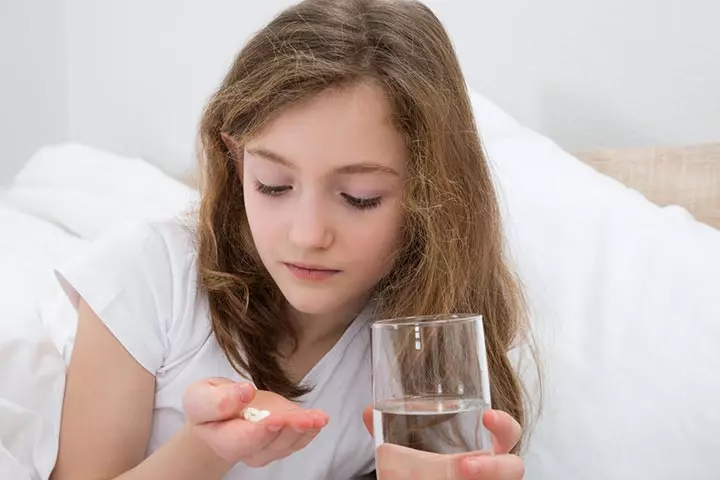
- Behavior therapies: Cognitive-behavioral therapies aim to make children understand the realistic and unrealistic thoughts that lead to panic attacks. It could help them overcome their fears and agitation. Play therapy or talk therapy can be useful in overcoming anxieties in childhood (5). Exposure therapies combined with progressive muscular relaxation aim to desensitize the child to fear and panic through the repeated presentation of the triggering stimuli (16).
 Quick fact
Quick factChildren with recurrent and more frequent episodes may require initiation of drug therapy before behavioral therapies.
Natural Ways To Address Panic Attacks In Children
Children benefit from behavioral therapies and medical treatment from experts more than natural remedies. Support and encouragement of parents and caregivers are required for better results. Parents can work towards avoiding any panic attack triggers.
The following lifestyle modifications and home care can act as coping strategies and help the child deal with the symptoms of a panic attack in the future (21) (22).
- Create a safe home environment: Identifying triggers for panic attacks in children can allow you to be watchful and keep your child informed of what they are experiencing. It will allow you to distract the child away from the trigger, empathize with them, and appropriately validate their feelings while reminding them that this tough phase will pass.
- Practice affirmations: Parents can reassure the child with daily affirmations which remind them of their strength and resilience. You may tell children how brave they are for having faced panic attacks and how they have your support every step of the way.
- Challenge unhelpful thoughts and behaviors: Allow the child to describe their thought patterns and help them realize how some of their thoughts may be hindering their functionality. You may do this by appropriately probing into their thoughts and challenging them to think more helpfully. The child will gradually come up with ways to deal with the situation instead of panicking.
- Provide novel experiences: Encourage the child to explore new people, places, and scenarios instead of running away from them out of fear of triggering an attack. If a child is particularly anxious about the experience, have a role-play session beforehand to encourage preparedness.
- Relaxation techniques: Learn age-appropriate relaxation techniques for children, such as deep breathing and yoga, and teach them to your child. These methods can help minimize stress and promote calmness. When the child is not having an attack, practice mindfulness and grounding techniques as part of the daily routine. Allow them to find different sensory stimuli in their surroundings to recenter themselves to the here and now. Also, teach the child to relax their muscles with each sensory object progressively.
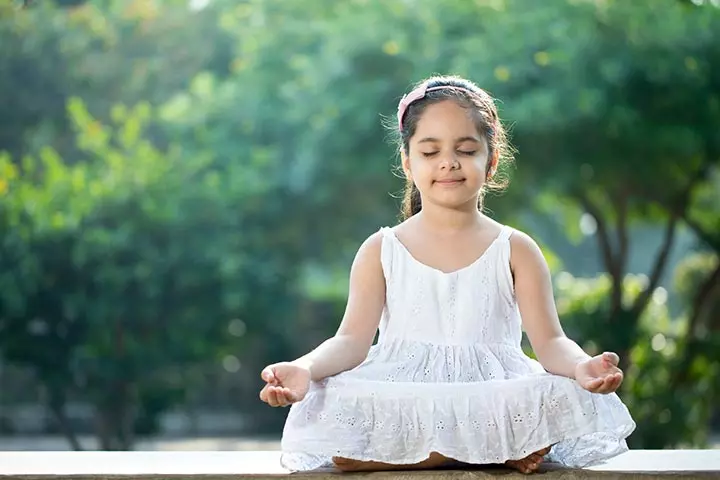
- Physical activity: Encourage your child to involve themselves in sports and activities, such as dance and martial arts. Exercises can help reduce stress.
- Sufficient sleep: Good deep sleep is important for physical and mental well being.
- Encourage discipline: Allow the child to contribute to tasks in and around the house, such as cooking or laundry, grocery shopping, gardening, and organizing events. If the child finds a particular task daunting, help them break it into smaller segments that are easier to achieve.
You might also find it helpful to create a calm home environment, use positive reinforcement, and encourage open conversations about feelings. You may also join some parental guidance and support groups created by parents dealing with panic attacks in children. This may help you manage stress and other difficulties caused by your child’s condition. However, if the child needs more help changing their lifestyle, consider approaching a mental health professional for further assistance.
Herbal supplements and dietary supplements for the treatment of panic disorders are not monitored by the US Food and Drug Administration (FDA). If you want to use such products, then consult a pediatrician for advice on their safety and efficacy.
Types Of Anxiety Attacks In Child
The following are the common types of panic attacks based on their causes (7) (8) (9).
- Unexpected (uncued) panic attack: These are panic attacks without any internal or external cause or trigger. It can occur at any time and in any situation.
- Situational (cued) panic attacks: These are panic attacks that occur due to exposure to certain types of stress or situations. They might be predictable and prevented by avoiding the triggers. Children usually can have cued panic attacks during family arguments, exam time, or in social situations.
- Situationally predisposed panic attacks: It is a panic attack triggered by certain situations, but may not always occur. This type of panic attack may also happen before or after the triggering situations, but not during the situation. For instance, a child may have panic attacks before or after school exams, but may not be panicky while writing the exam.
Panic disorder is a type of anxiety disorder. There are many other types of anxiety disorders in childhood, closely associated with panic disorders (10).
- Generalized anxiety disorder: It is a disorder involving excessive worry or anxiety about academic performance, friendship, or family situations that could cause tiredness, trouble sleeping, and tense muscles. According to the US National Institutes of Health (NIH), childhood anxiety affects around 5.7% to 12.8% of children under 18 years. Also, its prevalence is estimated to be twice as high in girls than in boys (23).
- Separation anxiety disorder: It is the fear of being separated from parents or caregivers and may cause a child to refuse to go to school. Physical symptoms, such as nausea or headache, can accompany this disorder. This form of anxiety is more common in toddlers than older children.
- Selective mutism: It is the refusal of a child to speak in certain situations. It may be seen in children of school-going age. An example of this condition is when an overly talkative child at home or other comfortable situations becomes inexplicably silent at school.
- Specific phobia: Some children may have intense fear or anxiety about certain situations or objects. This type of fear is called phobia. Fear of certain animals, water, heights, needles, closed spaces, loud noises, etc., are examples of specific phobias.
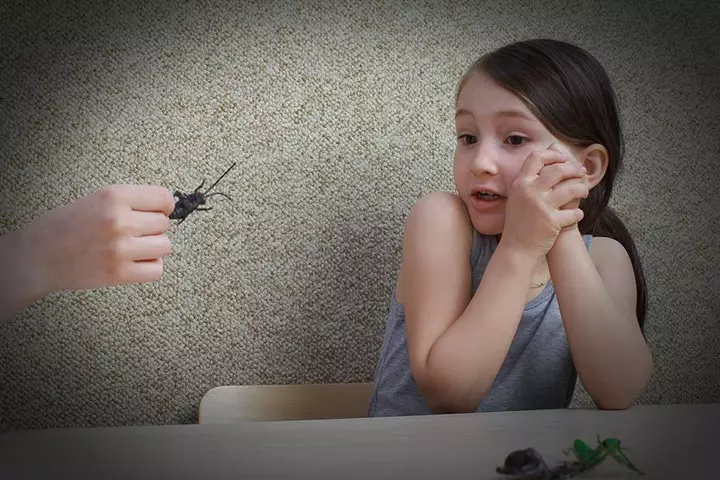
- Panic disorder: It is an anxiety disorder with recurrent panic attacks without any factors causing fear or worry.
- Social anxiety disorder:It is a type of anxiety disorder with extreme fear of social interaction or performance in peer groups or a class. A child with this disorder may cry, cling to adults, may freeze, and refuse to speak in situations that trigger anxiety.
Panic attacks and anxiety attacks may have similar symptoms. However, anxiety is excessive worrying about certain imminent events such as illness, academic scores, exams, being late to school, homework, etc.
Excessive anxiety may cause anxiety attacks, including physical symptoms of restlessness, tiredness, lack of sleep, or often try to avoid situations. This may last longer or can be chronic.
Panic Attacks In Children At Night
Panic attacks during nights are called nocturnal panic attacks. It is the sudden awakening from sleep with apprehension or fear and physical symptoms without real triggers of fear (11). Children with nocturnal panic attacks may also have day time episodes. Symptoms are also similar to attacks that occur during the day. Panic episodes at night may last for a few minutes, but a child may require time to calm down and go back to sleep.
Nocturnal panic attacks are neither dangerous nor require emergency treatment. You may make sure that there are no physical reasons that could cause a panic attack in the night. If you suspect the child has some problem, then seek prompt medical care.
 Did you know?
Did you know?Risks And Complications Of Panic Attack In Children
Panic disorders can occur in children but can be more common during teenage and adulthood. There are some other factors, as well, that can increase the risk of panic attacks among children (16).
- Panic attacks or panic disorders in family members and close relatives
- Death or illness of parents, siblings, caregivers, or anyone close to them
- Separation from both parents or one parent due to divorce or other reasons
- Childhood trauma such as physical or sexual abuse
- Physical trauma
Arguments among parents and the birth of new siblings are some of the reasons that can make a child feel ignored, thus increasing the risk of panic attacks.
If left untreated, panic attacks may lead to certain complications such as (1):
- Depression
- Anxiety disorders
- Suicidal thoughts and suicide
- Alcohol abuse
- Substance abuse
According to data from the US Centers For Disease Control And Prevention (CDC), depression, anxiety, and behavioral disorders are among the most prevalent mental health conditions that affect children in the United States. The graphical representation below depicts the prevalence of these mental health issues among children by age.
It highlights that behavioral disorders are more common among children between 6 to 11 years, whereas anxiety problems are common among children between 12 and 17.

Depression, anxiety, and behavior disorders in children and teens by age
Source: Data and statistics on children\'s mental health; CDCPanic attacks in children, if not treated at the right time, might lead to complications in their relations and also cause them to be socially detached over time. If your child is experiencing a panic attack, ensure that you talk to them about their feelings and reassure them that things will get better. Do not leave them alone to deal with their emotions as that might result in suicidal thoughts or depression. If you see no betterment in their symptoms despite parental intervention, it is ideal to seek medical care and consult a therapist.
Frequently Asked Questions
1. How do you calm a panic attack in children?
Talk to them in a calm voice and reassure them that they are safe. Help them take quiet breaths using belly breathing through their nose (mouth closed). This will slow the child’s breathing and help stop the attack (12).
2. What age do panic attacks start in children?
Panic attacks rarely happen in young children but may start from the teenage years (13).
3. Can brain tumors cause panic attacks?
Yes. Psychiatric symptoms such as panic attacks, personality changes, and problems with memory may be associated with brain tumors (14).
4. How are anxiety and panic attacks different?
Anxiety attacks have clear triggers in contrast to panic attacks. The latter occurs suddenly and stays for a few minutes, while it takes time for an anxiety attack to seep in, and may not stop soon. The symptoms of panic attacks are intense, but anxiety attacks range between mild and severe (15).
5. Will panic attacks go away with age?
Panic attacks typically occur in teens or early adulthood (16). Around 1% of children in the three to five age group and 6% in the six to 11 age group experience symptoms of an anxiety disorder (17). People of all ages, including children, can have panic attacks. Symptoms often begin before age 25 but may occur in the mid-30s. So, it cannot be said that panic attacks subside with age (18).
6. Can I get an inhaler for panic attacks in children?
Many people with asthma also experience panic attacks (19). This occurs quite commonly, which is why panic attacks are considered an asthma symptom. Anxiety becomes an even more serious in children with respiratory diseases like asthma. A quick-relief medication, such as a rescue inhaler, will work to manage asthma attacks in children but not panic attacks.
Infographic: Calming Activities For Children With Panic Disorder
Seeing your child in distress can be heartbreaking. If your child has a panic disorder, the recurring episodes may affect their health. So try the distracting and calming activities from the infographic below to help them cope with their anxiety better.
Some thing wrong with infographic shortcode. please verify shortcode syntax
Illustration: Signs Of Panic Attacks In Children & Ways To Deal With it
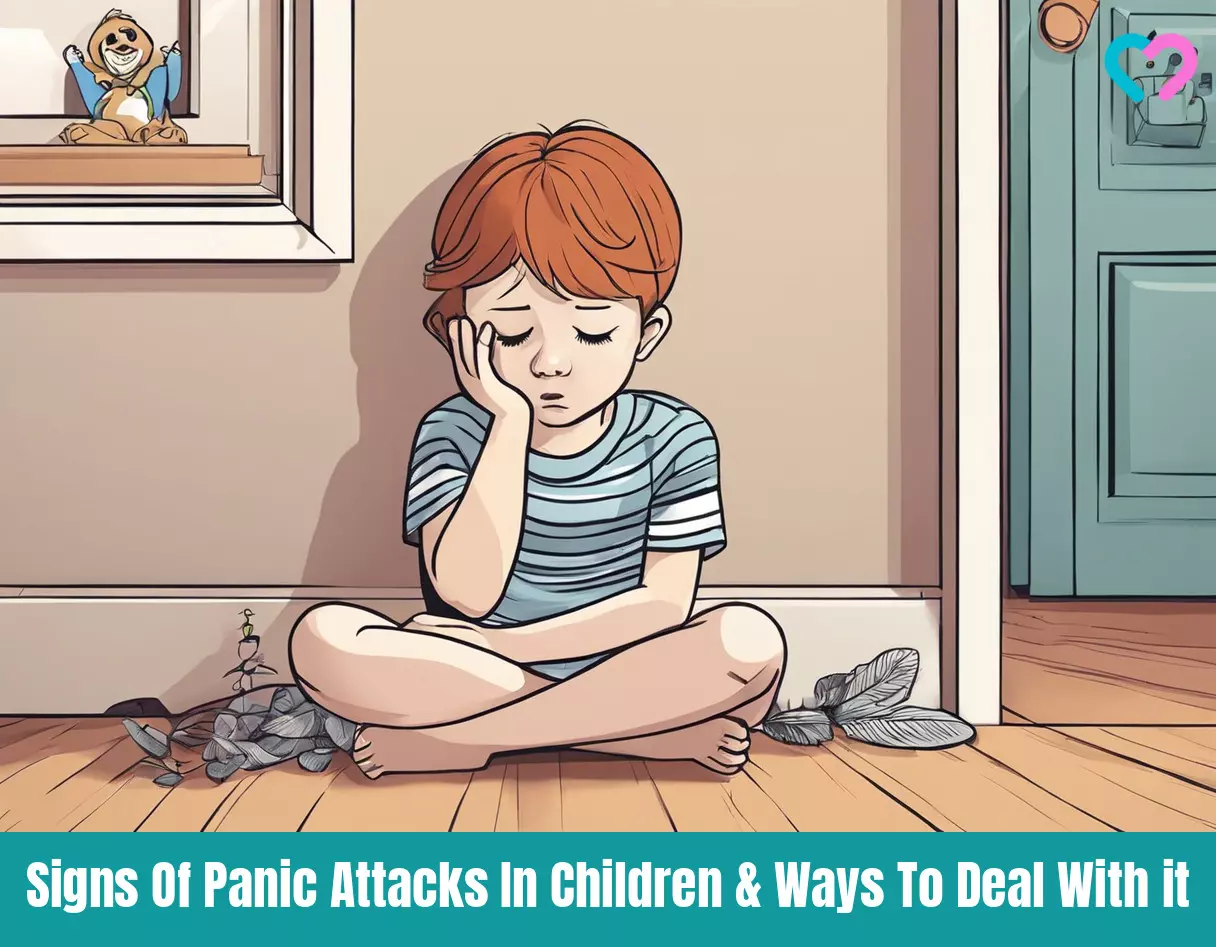
Image: Stable Diffusion/MomJunction Design Team
A helpful story to help children understand and manage panic attacks. Learn how to recognize the signs and cope with the fear and anxiety.
Personal Experience: Source
MomJunction articles include first-hand experiences to provide you with better insights through real-life narratives. Here are the sources of personal accounts referenced in this article.
i. When anxiety takes your child;https://marisabel-garcia-43.medium.com/when-anxiety-takes-your-child-part-2-6c6193ca2fa6
References
1. Panic Disorder In Children And Adolescents; The American Academy of Child and Adolescent Psychiatry
2. Panic Disorder in Children and Teens; Children’s National Hospital
3. Panic Disorder; The United States National Library of Medicine (NLM)
4. Anxiety disorders Symptoms & Causes; Boston Children’s Hospital
5. John R. Vanin, et al.; Panic Disorder: Diagnosis and Treatment in Primary Care; The American Academy of Family Physicians
6. Josephine Elia; Panic Disorder in Children and Adolescents; Merck Manuals
7. Panic attacks: A classic symptom of several anxiety disorders; MentalHelp; American Addiction Centers
8. Situationally Predisposed Panic Attack; American Psychological Association
9. John C. Thomas, Panic attacks: Can they really be stopped?; Liberty University
10. Childhood anxiety disorder; The Anxiety and Depression Association of America
11. Panic disorder with nocturnal panic attacks: symptoms and comorbidities; U.S. National Library of Medicine
12. Panic Attack; Seattle Children’s Hospital
13. Quick Guide to Panic Disorder; Child Mind Institute
14. Despina Moise and Subramoniam Madhusoodanan;Psychiatric symptoms associated with brain tumors; a clinical enigma; NCBI
15. Do You Know the Difference Between Panic and Anxiety?; Mclean Hospital
16. Panic Disorder; Cleveland Clinic
17. Data and Statistics on Children’s Mental Health; CDC
18. Panic Disorder; National Library of Medicine
19. Asthma and Panic in Young Adults; NCBI
20. What are panic attacks?; UNICEF Parenting
21. 9 tools for helping your child manage anxiety; Mayo Clinic Health System
22. No need to panic! How to help your child during a panic attack; CHOC
23. Generalized Anxiety Disorder; NCBI
Community Experiences
Join the conversation and become a part of our nurturing community! Share your stories, experiences, and insights to connect with fellow parents.
Read full bio of Dr. Nikolina Zdraveska

Dr. Nivedita Nayak is a clinical psychologist with a PhD in Psychology from the Tata Institute of Social Sciences in Mumbai. She has worked extensively in trauma, emotional intelligence, and family systems. Dr. Nayak helps individuals and families understand and manage the emotional undercurrents that shape their relationships. Her work is known for being grounded, compassionate, and deeply human.
Dr. Nivedita Nayak is a clinical psychologist with a PhD in Psychology from the Tata Institute of Social Sciences in Mumbai. She has worked extensively in trauma, emotional intelligence, and family systems. Dr. Nayak helps individuals and families understand and manage the emotional undercurrents that shape their relationships. Her work is known for being grounded, compassionate, and deeply human.
Read full bio of Dr Bisny T. Joseph
Read full bio of Swati Patwal
Read full bio of Apoorva K





